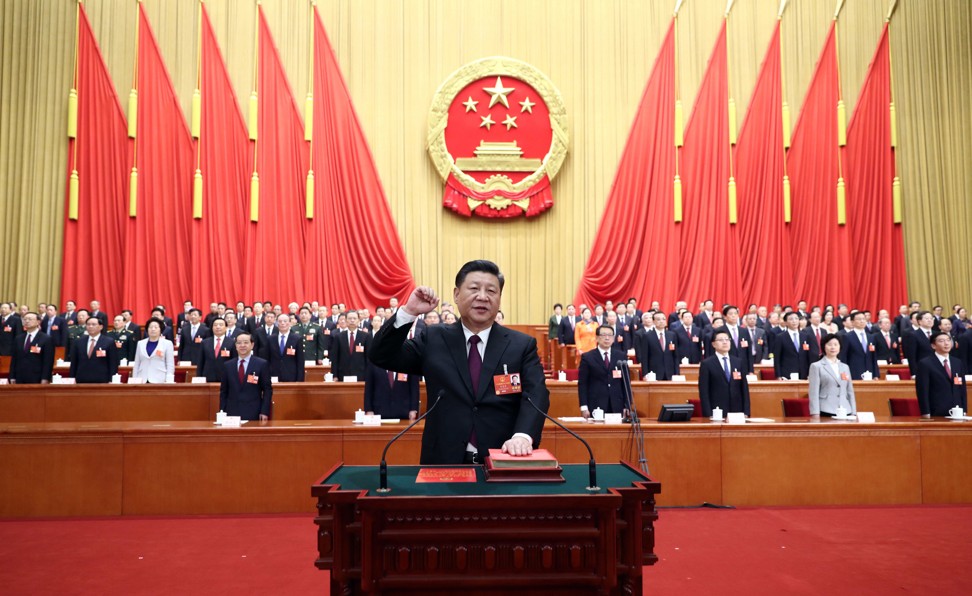
What does Beijing get right? It’s all about change, China watcher says
Author Hugh Peyman believes Deng Xiaoping’s approach will continue to serve the country well, and ‘as long as China keeps changing, it will find its way’
China’s economic boom over the past four decades has frequently drawn doomsday predictions about its growth machine running out of steam and the country ending up in Japanese-style stagnation, or worse – a Soviet-style collapse.
But the economy has continued to gallop ahead and defy those forecasts, at least up to now.
In his new book, veteran China watcher Hugh Peyman – who has spent the past 40 years in Hong Kong, Singapore and Shanghai – explores the question of what China is getting right.
The answer, he says, is that China knows how to change.
“China ‘gets’ change, today’s West does not,” Peyman writes in China’s Change: the Greatest Show on Earth.
How China plans to push back against Donald Trump in ‘economic cold war’
Drawing on his personal observations of the Chinese economy and society, and borrowing from ancient Chinese classics such as The I Ching, or Book of Changes – which dates back more than 2,000 years – Peyman concludes former paramount leader Deng Xiaoping’s gradualist and pragmatic approach of “crossing the river by feeling the stones” will continue to serve the country well.
“As long as China keeps changing, then China will find its way,” the Oxford-educated author told the South China Morning Post.

Peyman, who has worked as a journalist for Reuters and the Far Eastern Economic Review, and as a researcher for Merrill Lynch, said those who questioned China’s model often misunderstood the complex realities facing the world’s second biggest economy, and overlooked its ability to adapt and capacity for “continual renewal”.
The founder of Research-Works, a China-focused investment strategy firm based in Shanghai, also brushed aside concerns about the sustainability of the country’s economy, from its mountain of debt to the murky world of shadow banking – major problems that President Xi Jinping has told the top cadres to bring under control.
In a remote corner of China, Beijing is trying to export its model by training foreign officials the Chinese way
Peyman gives the rapid growth of debt just 3½ pages in his book, concluding that it is not a problem because the debt ratio is still low.
“A rapid rise in the credit-to-GDP ratio is normal for any economy at China’s stage of development. It is a sign of progress,” he writes.
Similarly, he argues that fears of “ghost cities” – ambitious projects that are abandoned and lie empty – are overblown, based on his research and observations of two new districts, Pudong in Shanghai and Zhengdong in Zhengzhou. Both are successful examples of China’s “build them and they will come” approach.
Peyman draws attention to the bright side of the China story – its huge market of 1.3 billion consumers, a thriving private sector, investment in education and “new sources of growth” made possible by technological development.

On the trade war between Beijing and Washington, Peyman told the Post he believed it would not disrupt China’s economic rise, because exports are “not the only game in town” for growth.
He said Donald Trump’s interest in businesses like steel showed the US president’s thinking was still locked in the days when steel was a symbol of industrial power and jobs, which is not the case any more.
“I don’t think he [Trump] has a concept of change, whereas in China and many other places there’s a concept of change,” he said.
Don’t mention the trade war: what China doesn’t want people to know in its dispute with the US
In contrast, Peyman highlights in his book the Chinese leader’s tactics.
“Xi and his inner circle approached reform very methodically. Patiently building a solid foundation brick by brick, they garnered broad support without alienating too many people at once,” he writes.
“If he [Xi] intends to alert the power of state enterprises and even institutions while allowing the private sector’s expansion and individuals to have better lives, which would be considered a rightward turn, Xi has to be seen turning to the left first, even if that is not his ultimate destination.”

